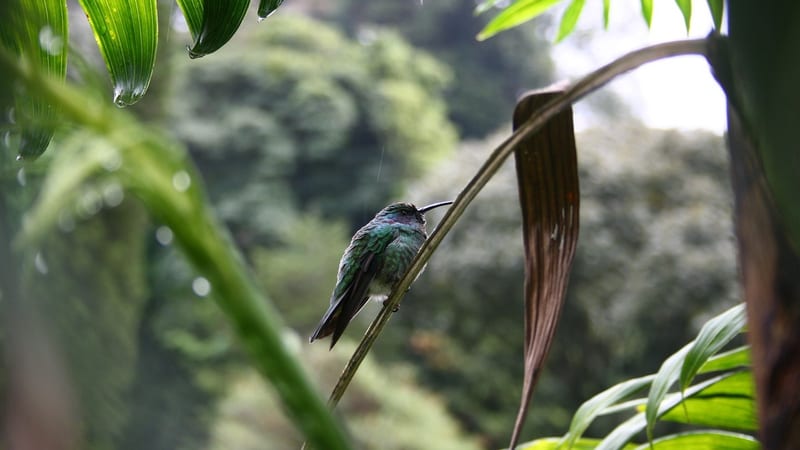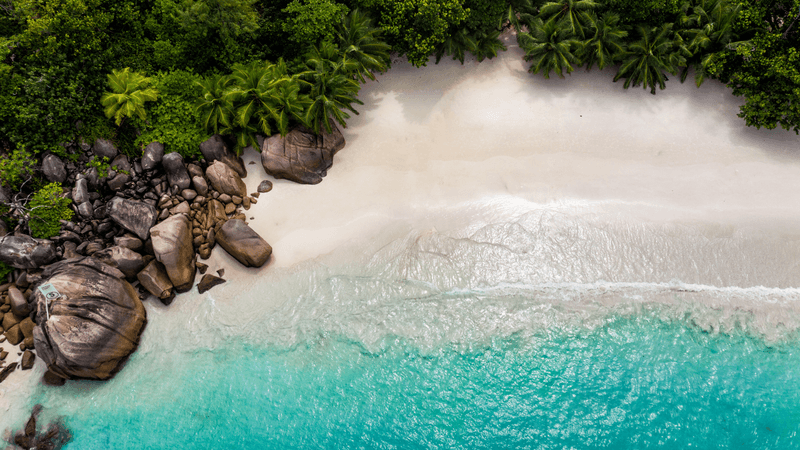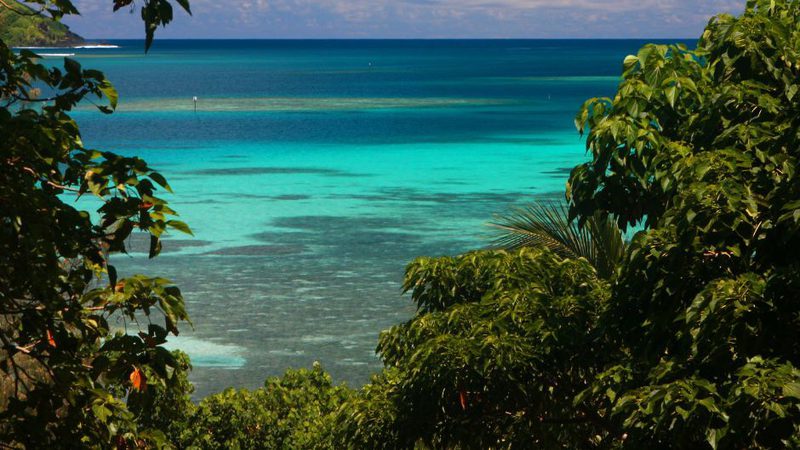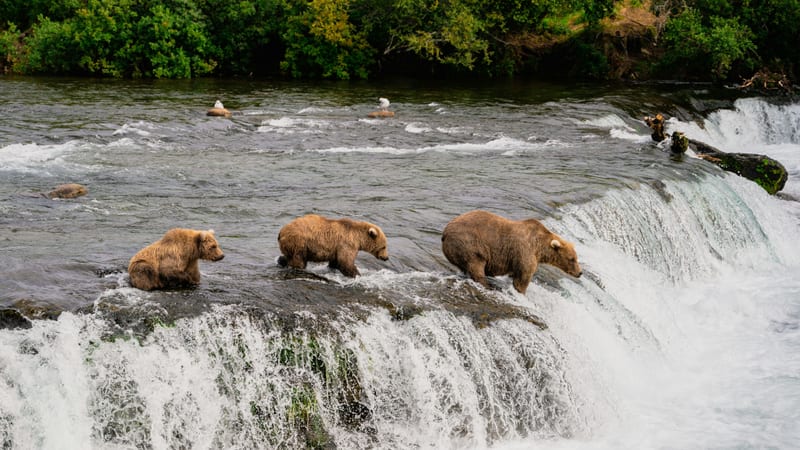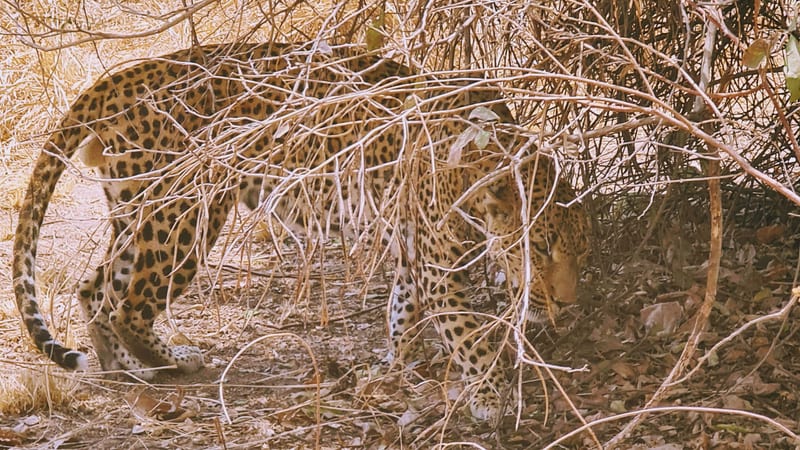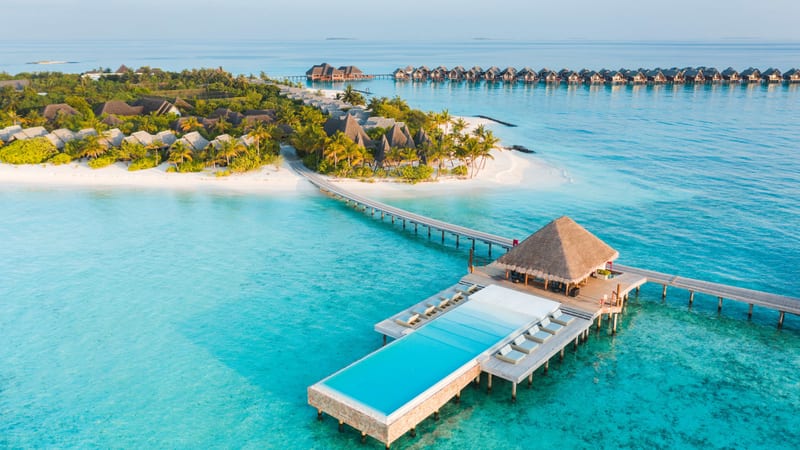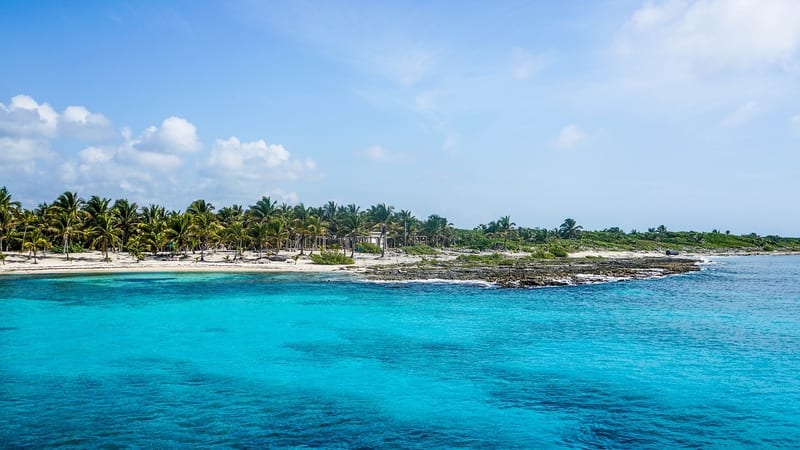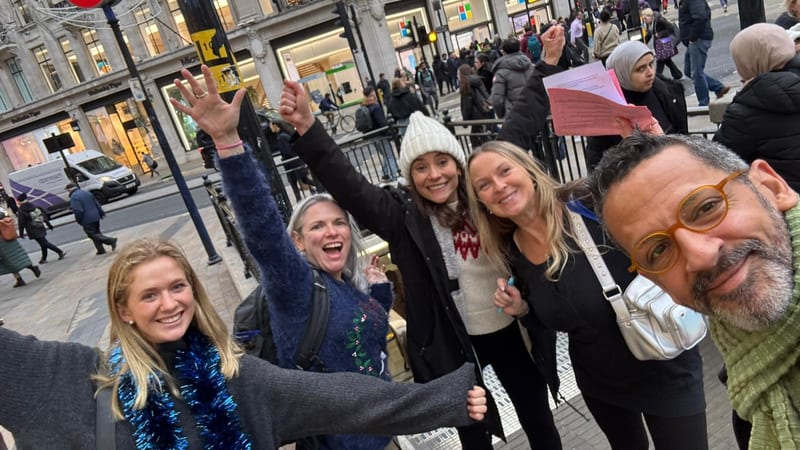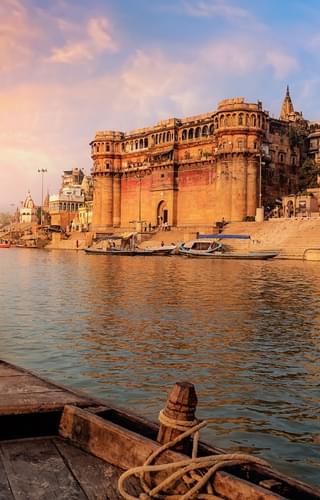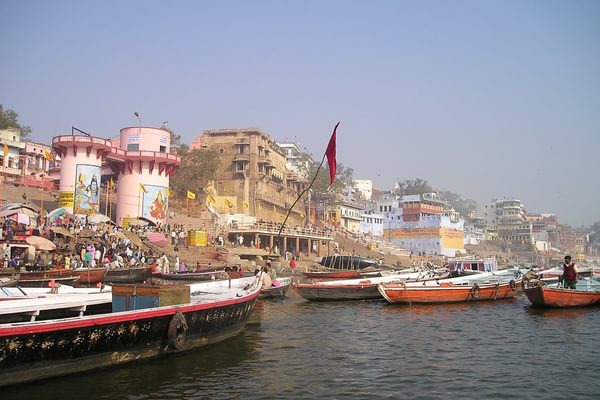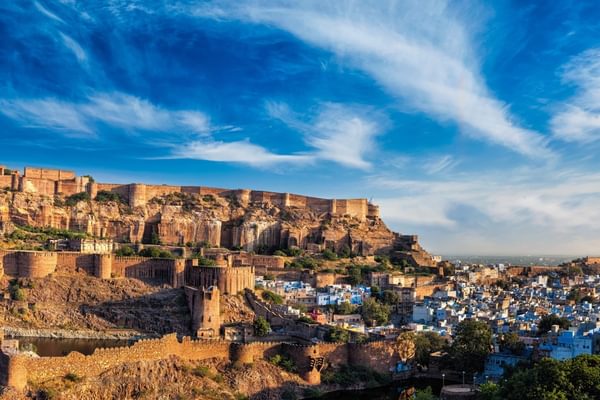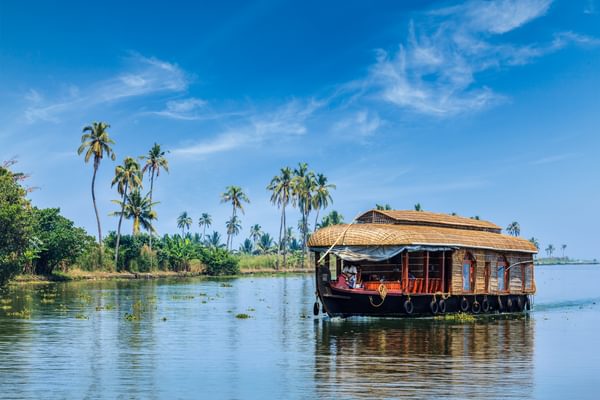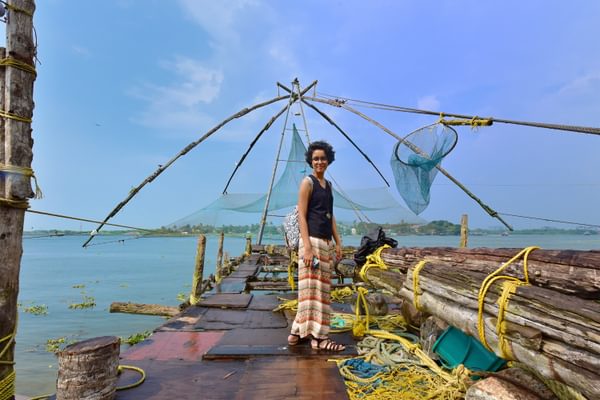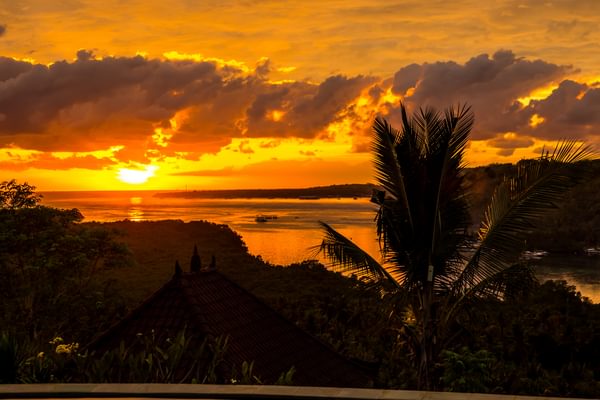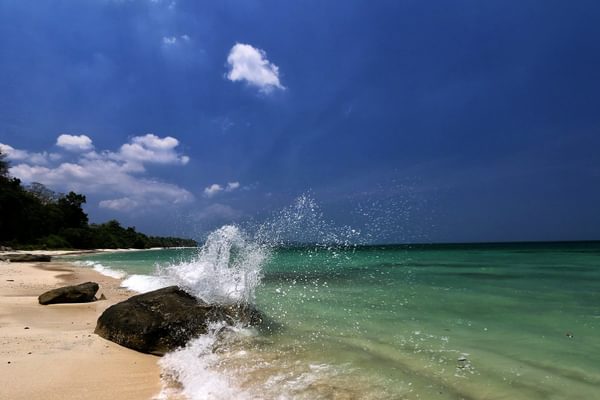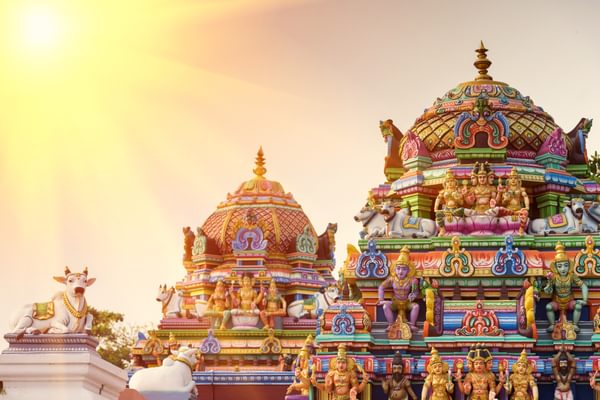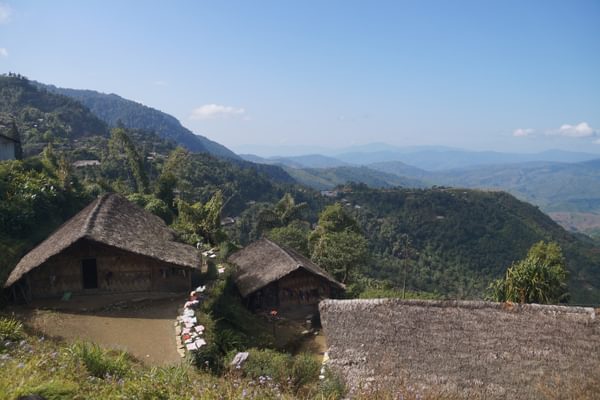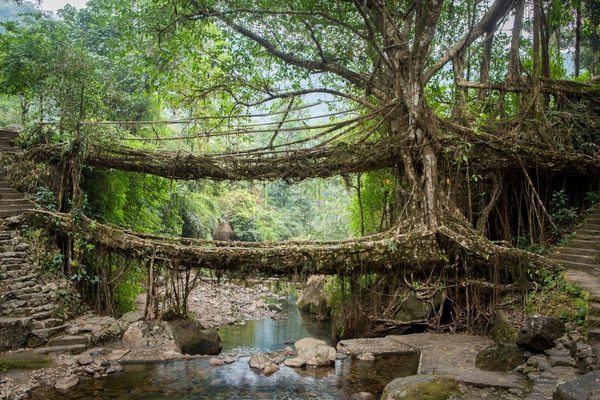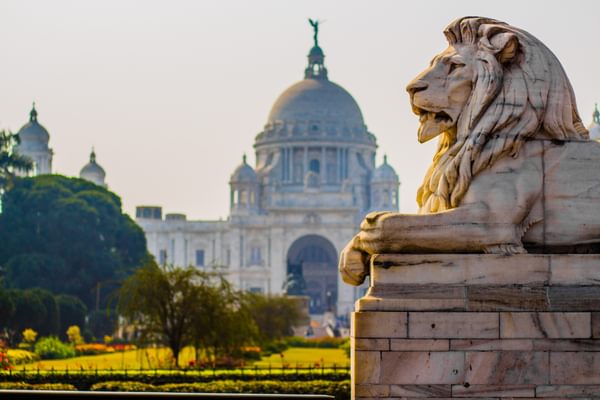India isn't just a country, it's a feeling
Explore fairy tale forts, marvel at the Himalayas, sleep on houseboats and search for tigers in steamy jungles
India isn’t just a country, it’s a feeling. One that you’re going to want to grasp with both hands and never let go. It’s a place where souls are stirred and senses are heightened, where those who embrace the unexpected are rewarded with evocatively rich experiences and enough stories to last a lifetime.
A land of myth and legend where tigers hide in jungles, temples are made of gold, and cows compete with cars for space on the highways, India is as diverse as it is mysterious. Colourful cities entice with their heritage and vibrant bazaars; iconic trains chug past lush tea plantations and golden beaches; and boatmen wave as they paddle their crafts through sleepy backwaters. It’s a lot to take in, but it’s a pleasure to try.
Stretching from the mighty snow-laden peaks of the Himalaya in the north, to tropical forests in the south; and from vast sandy deserts in the west to remote tribal regions in the east, India is a destination that will make you believe in magic. Linger on the roof terraces of crumbling fortresses, knowing that the ancient stones beneath your feet bear witness to the rise and fall of many a kingdom. Cruise down the holy River Ganges and contemplate life that has little changed over the centuries. And when you’ve had enough excitement for the day, indulge in deliciously diverse local dishes for dinner, before drifting gently off to sleep in traditional palaces, jungle camps and wooden houseboats, dreaming of the possibilities that dawn will bring.

Golden Triangle & Tigers – Your Way
- Delhi
- Agra
- Ranthambore
- Jaipur
Spice up this classic route with wild tigers and more
India Trip Inspiration
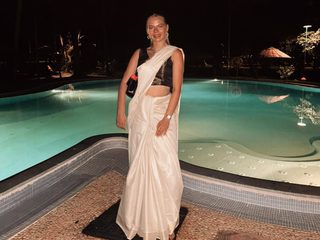
Our India expert, Nia, says:
“On my recent journey through India, I was struck not only by the serene beauty of the misty hills around Munnar and the peaceful backwaters of Kerala, but also by the warmth and generosity of the people I met along the way. From lively markets to quiet villages, every conversation added something to the experience and gave me a deeper insight into this remarkable country. It’s a destination that leaves you with lasting memories of both its beauty and its people.”
When to go to India
Find out the best time to visit India with our month by month guide.
- Best
- Good
- Mixed
- Jan
- Feb
- Mar
- Apr
- May
- Jun
- Jul
- Aug
- Sep
- Oct
- Nov
- Dec
January
January is a great option for sightseeing in the north, days are clear and warm with minimal fog in the mornings. During this month, southern India provides a warm, sunny escape - properties in Kerala can fill quickly. If all that wasn't enough, visitors can experience some of the best mountain views in the Himalaya's - but you'll need to wrap up warm!
- Kite Festival in Gujarat
- Bikanar Camel Festival in Rajasthan
- Republic Day 26th January
February
February sees all the fog clearing in Northern states and it is regarded as one of the best months to travel as the whole country is warm and sunny. Visiting Delhi and the Golden Triangle are amazing during February and March, October and November but you will experience crowds at these popular sites.
March
One of the more popular months to travel, March is great for both weather conditions and cultural experiences, including Holi celebrating the victory of good over evil. If you're looking to go hiking, March is perfect in the Western Ghats. Visiting Delhi and the Golden Triangle is amazing during February and March, October and November but you will experience crowds at these popular sites.
- Holi Festival - world famous paint throwing celebration.
April
April sees temperatures sore country-wide, making it one of the driest and best months to go elephant and tiger spotting. As daytime temperatures can reach over 40 degrees we recommend excursions based in the mornings and evenings.
May
Temperatures and humidity continue to rise in May, reaching 45 degrees, which can make it uncomfortable. But wildlife viewings continue to be at their best as animals search for water sources.
June
From June, Ladakh is accessible offering incredible scenery and a complete contrast to the rest of India. Days are warm and bright, but you will need to pack layers for added warmth.
We recommend not travelling to Southern India and the Himalayas as humidity is high and thunderstorms are frequent as the country awaits the monsoon season.
July
Much like June, July offers incredible views across Ladakh whilst elsewhere monsoon season rains are imminent.
August
August is the perfect time to cruise along the Ganges thanks to the monsoon and its increased water levels.
September
September marks the end of the monsoon season and weather can still be unsettled across the country. If you're looking for good value travel, there can be some good deals in Rajasthan. Travel to Ladakh comes to a close as the season ends.
October
October is peak travel season, the rains end and the north of the country is warm. Visiting Delhi and the Golden Triangle is amazing during October and November but you will experience crowds at these popular sites.
- Mahatma Ghandi's birthday is celebrated on the 2nd October and is a national holiday.
- Diwali, the ancient Hindu festival of lights dazzles and illuminates the sky.
November
November is one of the best months to travel anywhere in India. Visiting Delhi and the Golden Triangle is amazing in November but you will experience crowds at these popular sites.
December
Southern India is sunny and warm in December, making it a popular option for yuletide celebrations. If you want to delve into northern culture, daytime temperatures as beautiful, however mornings and evenings can be cold and sometimes foggy.
Types of India holidays
Where to go in India
Best places to visit in India
Best places to stay in India
FAQs About Your India Holiday
Planning a holiday to India? Our experts share advice on everything from what to pack, when to go, to tips for families, covering the questions we get asked the most.
What are the must-see sights and experiences in India?
India offers a rich tapestry of experiences that span heritage, scenery, wildlife and luxury hospitality, all of which work beautifully for a tailor-made holiday.
Most journeys begin in the north, where Delhi’s Mughal monuments and bustling markets set the stage before moving on to Agra and the unmissable Taj Mahal, best seen at sunrise when its marble glows softly in the light. From there, Rajasthan beckons with the rose-hued palaces of Jaipur, the golden fort of Jaisalmer, and the blue lanes of Jodhpur, all offering glimpses into royal India’s artistry and grandeur. Beyond the cities, rural Rajasthan brings a quieter rhythm of desert dunes, camel safaris, and heritage retreats where local crafts and cuisine take centre stage. To the east, Varanasi hums with spiritual energy along the Ganges, while further south the backwaters of Kerala invite calm with their palm-lined canals and traditional houseboats. Tea estates in the Nilgiri Hills, colonial echoes in Tamil Nadu, and cool Himalayan hill stations offer yet more contrast. For wildlife enthusiasts, India’s national parks such as Ranthambore, Bandhavgarh, and Kaziranga promise tiger sightings and jungle luxury, while those seeking the sea can end their journey on the beaches of Goa or the turquoise shores of the Andaman and Nicobar Islands.
Is the Taj Mahal worth a visit or is it too touristy?
In our view the Taj Mahal is very much worth a visit, provided your planning takes its popularity into account. It is globally celebrated and for good reason: the craftsmanship, symbolism and scale mark it out as an architectural jewel.At the same time, it is extremely well visited, which means crowds, surrounding commercial areas and logistical demands come into play. Our recommendation is to include it if you are doing the heritage leg of north India and to do so in a considered way: plan early morning or late afternoon at the monument, use a high-quality guide and pair the visit with other experiences so it doesn’t dominate the trip.
When is the best time to visit India?
The best time to visit India for most luxury travel interests is from October through to March when much of the country enjoys drier, cooler weather, making sightseeing, safari and beach segments far more comfortable. Summers (April–May) in the plains tend to be very hot and monsoon (June–September) can bring heavy rain, humidity and disruption.That said, if your interest lies in high-altitude trekking or very lush landscapes then the summer months or shoulder seasons might work, but for a luxury holiday built around heritage, nature and beach, the Oct–Mar window is the sweet spot.
What is the ideal India holiday length?
For a luxury holiday that does justice to India’s scale, we typically advise at least 10 to 14 days. This gives you time to settle in, explore one or two regions at a relaxed pace and enjoy the transitions rather than rushing. If you are combining multiple regions (for example north India with a wildlife reserve plus beach time), then 14 to 21 days is much more comfortable. A shorter stay of 7 to 10 days can work if you focus on a single region (for example the “Golden Triangle” of Delhi-Agra-Jaipur) and accept a more compact schedule.
What is the best way to get around India?
For a luxury-tailored holiday in India your transport framework will ideally include domestic flights between major hubs, and a private car with driver/guide for regional segments such as heritage towns or rural stays. This offers comfort, flexibility and personalised pace. In some cases, luxury trains or even helicopter/seaplane transfers (for remote or premium beach or island properties) may come into play. The key is to avoid long, tiring ground cross-country legs and instead connect places sensibly so you arrive refreshed and ready for the experience. The more active travellers can also do cycling tours.
What should I know before travelling to rural Rajasthan?
Rural Rajasthan invites you into a world of forts, desert landscapes, village crafts and heritage hospitality, but it also calls for sensible planning. The climate can be extreme in summer and nights cold in winter, roads may be less refined than city highways and local customs matter: modest dress, respectful behaviour and sensitivity to local traditions will elevate your experience. Many of the top heritage-camp and lodge stays in rural locations deliver high comfort, but you’ll want to ensure your vehicle is well-equipped and allow travel time for non-urban distances. What we love about rural Rajasthan is the confluence of palace-hotel luxury, authentic village craft encounters and desert scenery.
Is India a good destination for beach lovers?
India offers some genuinely excellent beach destinations, ranging from the resort coastlines of Goa and Kerala to the more remote island splendour of the Andaman & Nicobar Islands. The experience will depend on the region and season, so it is important to pick your beach segment carefully. When done well, you can mix beach time with luxury service, wellness or marine-nature adventure behind the scenes.
What makes India a good destination for luxury seekers?
India ranks very highly for luxury seekers thanks to a blend of heritage, wilderness and bespoke service. You’ll find magnificent palace-converted hotels, high-end safari lodges in wildlife reserves, and stylish beach resorts, all offering private guides, tailor-made experiences and local resonance. Luxury here isn’t simply “big hotel”, it’s character and immersion. The diversity of experiences, from desert camps to jungle lodges, from spa retreats to private craft tours, makes India especially appealing.
Can I combine different regions of India on a single luxury trip?
Absolutely. One of India’s strengths for luxury travel is that you can journey across very different landscapes and cultural zones in one itinerary: heritage in north India, safari in the interior, beach time by the sea. With well-planned logistics you can link destinations, so you feel the shift rather than it feeling like transit. The key is to keep the number of major regions manageable (two to three) so you maintain a pace of luxury, not rush. Structuring an itinerary with clear transport windows and generous stays ensures the transitions are elegant, and the trip remains relaxing and purposeful.
Are private guides available for luxury holidays in India?
Yes, they are not just available, but we encourage you to insist on them. For a luxury holiday you’ll want a dedicated guide (and driver) for your party, someone recommended, experienced in the region, and attuned to your interests (heritage, photography, wildlife, local culture). Lodges and resorts also provide concierge liaison who will arrange private excursions, craft village visits, behind-the-scenes access and wellness treatments.
What types of adventure experiences are available in India?
India offers a broad palette of adventure experiences that suit luxury travellers who want more than just relaxation. You can take part in private safari drives and even walking safaris in top reserves; trek or ride in mountain landscapes; enjoy desert excursions on camel or Jeep; dive or snorkel in exotic island marine environments; or explore remote craft villages by helicopter or boat. The idea is to deliver meaningful adventure, so you return each evening to a beautiful setting, good food and ease.
What cultural highlights should we experience in India?
India’s cultural rhythm is rich and festival-driven, so timing your visit to coincide with major celebrations can heighten the experience. Two of the most prominent festivals are Holi (typically March) and Diwali (October or November depending on the lunar calendar). These festivals bring streets, temples and villages alive with colour, lights and ritual. It’s important to check the exact dates for the year you travel, because they shift annually. Beyond those, many regions have local festivals tied to seasons, culture and community tradition. Working one or two of these into your itinerary adds depth.
Can cultural exploration be combined with scenic experiences in India?
Yes, and this is where India truly shines. You will be able to visit historic temples, palaces and craft villages whilst concurrently experiencing scenic landscapes like desert dunes, jungle canopies and coastal expanses. This combination of culture and scenery gives a sense of place and variation, which we believe luxury travellers value highly. For example, you might walk through a rural village workshop in Rajasthan in the morning, explore a desert fort in the afternoon, and watch the sunset over dunes. The way cultural and scenic experiences weave together adds richness and prevents the trip from feeling one-dimensional.
Where are the best beaches in India?
Among the standout beach destinations for luxury travellers are the shores of Goa (especially the quieter south-coast resorts), the backwaters and coastline of Kerala, and the islands of the Andaman & Nicobar group, where you’ll find far fewer crowds and pristine marine settings. For example, the famed Radhanagar Beach on Havelock Island in the Andamans is often cited among Asia’s finest. These locations provide the breadth of beach experience, from resort ambience and wellness to remote island calm.
Where are the best places to spot wildlife in India?
India offers premium wildlife destinations that appeal strongly to luxury travellers. Top examples include Ranthambore National Park in Rajasthan, renowned for the Bengal tiger and forest-slash-ruin setting; Bandhavgarh National Park in Madhya Pradesh, with high tiger density and dense jungle; and Kaziranga National Park in Assam, famous for its one-horned rhino and rich biodiversity. These places combine core wilderness with high-end lodges, private guides and curated safari programmes.
Can we combine culture and adventure with a few days on the beach in India?
Yes. You might begin with heritage and culture in north or central India (palaces, temples, craft villages), move into an adventure or wildlife phase (jungle lodge, safari, trek), and then relax for a few nights on a beach, whether it’s a fashionable resort in Goa or a more remote island retreat in the Andaman & Nicobar Islands. The domestic flights and good resort-level infrastructure make this feasible. We recommend allocating a minimum of three to four nights for your beach segment so that it truly feels like recovery rather than a quick add-on. The result is a trip of variety, relaxation and luxury all in one.
Are there any health precautions I should take when travelling to India?
We are not medical specialists and would always advise speaking to your GP or a registered travel health clinic at least 8 weeks before you travel to ensure you have accurate advice. Please be aware that even within a country the advice varies from region to region so we strongly suggest speaking to a medical professional.
Do I need a visa to visit India?
The majority of countries we offer require visas to visit, please give our team of experts a call on 0203 111 1315 to chat through a specific country requirement as these do change over time. Visas can sometimes be purchased on arrival but often you are required to get one prior to travel. We recommend visiting the UK Foreign, Commonwealth & Development Office (FCDO) website or the relevant embassy for up-to-date information on visas, entry rules, and travel advice as soon as you have booked your trip.
Read more about India on our blog
Speak to a India expert today
and start planning your tailor-made holiday

Nia
India Expert




